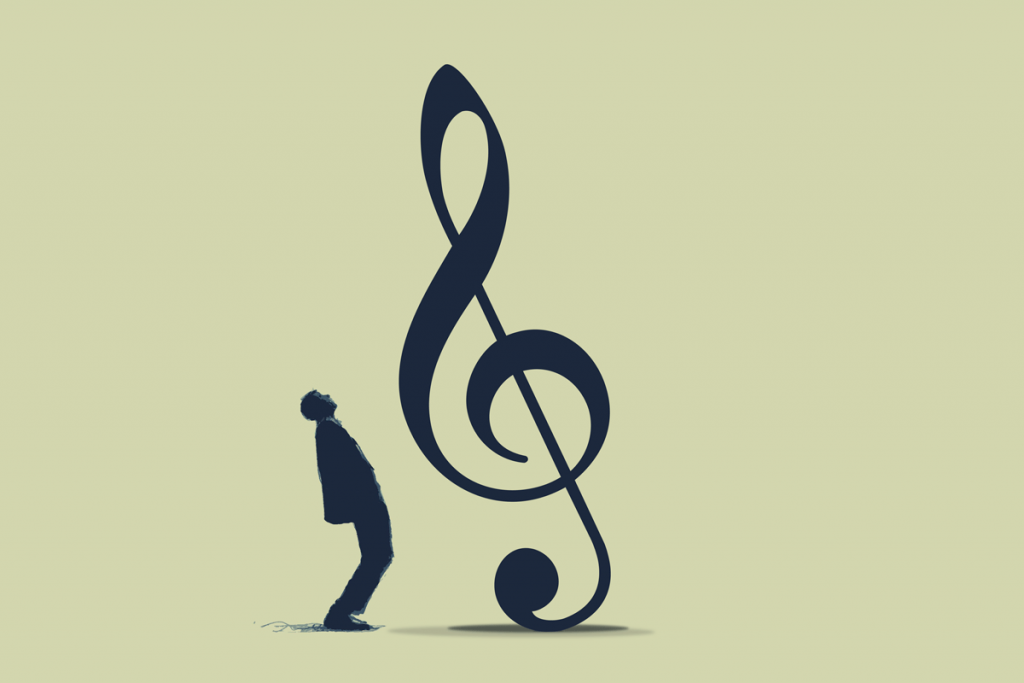When I joined Song Talk Radio as social media maven over a year ago, I knew nothing about songwriting. In the past, I learned to read music and play a few instruments including flute, bass clarinet, French horn and the drums. But I had never entertained the thought of writing a song.
In my first few months at Song Talk Radio, I didn’t understand much of the songwriting jargon the team (Bruce, Neel & Phil) would throw out during our broadcasts. I found myself frantically googling in the background to try to understand what they were talking about. These days, I understand most of what they discuss, but every once in a while they use a term I’ve never heard before.
Here is a list of terms that I’ve learned through my time on the show, and I hope it might be helpful to beginner songwriters too. I’ve found it a helpful resource to refer back to.
A Tacet: Latin for ‘be silent.’ A word used in orchestral and vocal scores to direct a particular instrument or voice to remain silent during a particular passage or section.”N.C.” (‘no chord’) is often used in guitar tablature or chord charts to indicate tacets or rests in the accompaniment.

Circle of Fifths: The term ‘fifth‘ defines an interval or mathematical ratio, which is the closest and most consonant non-octave interval. The circle of fifths is a sequence of pitches or key tonalities, represented as a circle, in which the next pitch (turning clockwise) is a fifth, or seven semitones, higher than the previous pitch. Musicians and composers use the circle of fifths to understand and describe the musical relationships among some selection of those pitches. The circle’s design is helpful in composing and harmonizing melodies, building chords, and modulating to different keys within a composition. Click HERE for a more in-depth description of the Circle of Fifths and how to use it, by Neel Modi.
A Capo: (pronounced “cape-oh”) is a small clamp that you can attach to the neck of a guitar at a specific fret. A capo, short for capo d’astro, capo tasto or capotasto, Italian for “head of fret board” is used on the neck of a stringed (typically fretted) instrument to shorten the playable length of the strings, and therefore raising the pitch. It is frequently used on guitars, mandolins, banjos, and ukuleles.
A capo is a helpful device that allows you to easily change the key of a song while using standard “open position” chords higher on the neck of your guitar.
Hook: a lyrical or musical piece of a song that is catchy and repetitive. The hooks in a song are generally the parts that people remember. The title of a song is almost always one of the hooks in the song. It may be the first line of the chorus, or it may be elsewhere in the song, as long as it’s repeated. Most songs that get played on the radio these days have a compelling hook.
Middle Eight: a term often used to describe eight bars that might include a bridge or an instrumental solo, which usually occurs after the second chorus in a song. North American songwriters usually call this the Bridge.
Pre-Chorus: also called “B Section”, “lift” or “channel”, is the part of the song that comes between the verse and the chorus. Usually the pre-chorus lifts the melody, and moves upward toward the chorus melody without reaching the peak notes of the chorus. Click HERE to listen to our Pre-Chorus episode, featuring Melanie Peterson.
Chord Progression: The number of ways chords can go together to produce new and interesting sounds is nearly infinite. Musicians use their intuition and experience to arrange chords in ways that move the music along. This notion of movement is important to understanding how to compose and improvise a piece of music. Chord progressions are what gives a piece of music its harmonic movement.
The way chords are placed one after the other in a piece of music is called a chord progression. The chords in a progression have different harmonic functions. Some chords provide the stability, some the departure, and some provide the dynamic tension.
The diagram below shows the formulas of the more common chord progressions in major and minor keys:
Good luck and keep on writing!
![[logo] Song Talk Radio](https://i0.wp.com/songtalk.ca/wp-content/uploads/2014/07/song-talk-logo-v22.png?fit=800%2C158&ssl=1)

